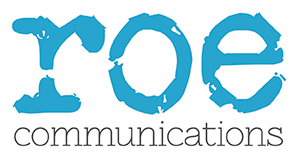Bill Gates once said, “If I was down to the last dollar of my marketing budget I’d spend it on PR!”
But with the current crisis, business school marketing budgets are stretched and teams pulled in different directions
Taking too long to get media announcements out, working on non-critical activities and pushing stories that aren’t newsworthy are just some of the things that can drain your team’s time – and take their focus away from what’s really important.
Regardless of size, in our experience, business schools that have a better reputation externally also follow key internal practices.
Here are our five ways to ensure that you are spending your time effectively on PR.
- Focus on your strengths
By their very nature, business schools have an awful lot of ground to cover in terms of areas of expertise. But if you try to be all things to all people, you will end up spending time and effort promoting activities and faculty outside of your core strengths. This will not help build a long-term reputation or carve out a clear positioning versus your competitors.
It’s better to pick a few core themes that you want to concentrate on and bring your key internal stakeholders along with you.
2. Stay true to your objectives
This year has not exactly been easy for marketing communications teams in business schools. Working from home, having to collaborate digitally, coupled with the uncertainty about health and jobs have all thrown many people off course.
Despite this, it’s important that with each activity you continue to focus on the ‘why?’ Why is it important to us to talk about this? Why is it relevant to outside audiences? Why will this tactic (e.g. a press release) get to our stated outcome? And, finally, how does it fit with our objectives?
Without doing this, you could end up doing PR for PR’s sake – with no strategic benefit.
3. Ask the right questions
Much of the time-wastage that we see in business school PR comes from a mismatch of internal perception of what journalists want against what they actually want.
Question every brief that you are given – often the story is not what it seems at face value. Focus on news value. Is the story relevant to the current news agenda, for instance? Does it matter to a wide amount of people? Is it unusual or contradictory?
Be ready to say no to stories that are not newsworthy – it will save you considerable energy in the long run. Busy journalists will not thank you for pitching them substandard content.
4. Be more targeted
Many business schools still use the ‘spray and pray’ method of PR. They put a press release out on a newswire to hundreds of journalists and move on to the next task. Often, this is because they feel pressured to get high-profile, top tier press coverage every time.
This sometimes works (particularly if you are a big institution and your story is extremely strong), but the majority of the time, journalists still need to be persuaded to take an interest.
Remember also that the pandemic has affected the way that journalists work. The majority (not all), are still having to work at home, juggling work and home commitments like everyone else. This means that they are having to source stories and manage news conferences remotely.
You are more likely to make an impact with well-researched, relevant stories pitched to journalists who write primarily for your target audiences.
5. Invest in skills
This is a longer-term point, but not having the right skills in your team can add significantly to the time it takes to get results.
These include technical skills such as being able to spot a newsworthy story and pitch effectively, managing social media, leading projects, nurturing strong relationships with journalists and measuring results.
But you also need people who can build effective relationships with faculty, develop strategy and manage a crisis.
Investing in learning and development for your team – particularly for in demand areas such as social media – will keep costs down and save time.
If you want to make your PR function run more effectively, you can find more insights HERE.


